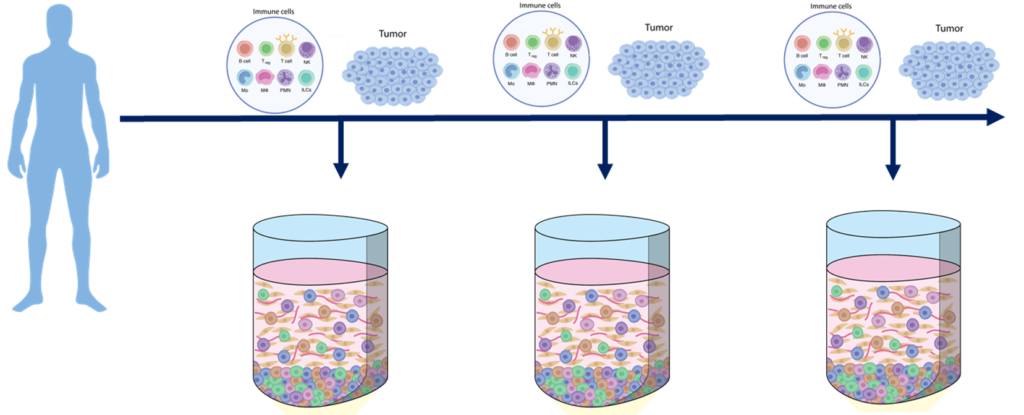While 45-50% of cancer patients have seen the benefit of groundbreaking treatments such as anti-PD1 and anti-PD-L1 therapies, close to approximately 40% of patients do not respond or have demonstrated resistance. This phenomenon has led to the classification of tumors based on the level of T cell infiltration present in the tumor microenvironment. Further studies have shown the correlation of positive patient responses to high T cell infiltration in the tumor microenvironment and low T cell infiltration results in patients who do not respond to immunotherapy. Measurements of infiltration are typically conducted via immunohistochemical (IHC) studies of patient tumor biopsies either pre or post treatment.
To build on this phenomenon of T cell infiltration, IMMUNE 3D® is exploring the role of lymphocyte migration and infiltration at the early stages of cancer diagnosis by studying longitudinal patient samples. We aim to build on our preliminary proof-of-concept dataset in melanoma and colorectal cancer and expand into broad tumor types.


